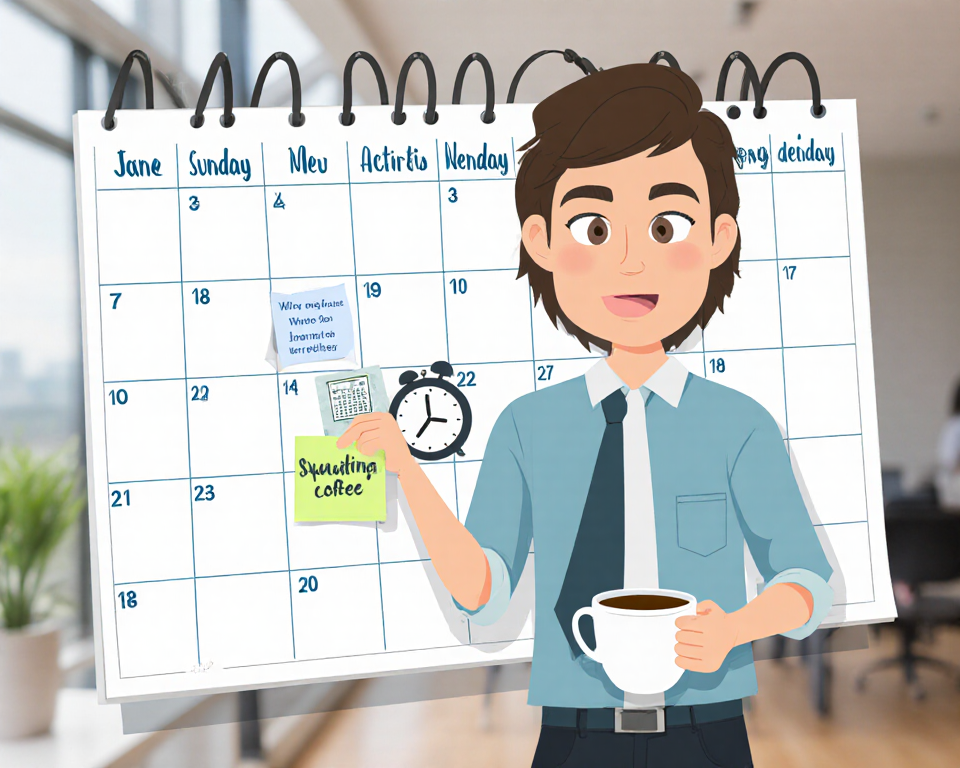Beginner Cardio Plan for Busy Professionals: A Practical Guide to Staying Fit Without Sacrificing Your Schedule

Life as a professional often feels like a high‑speed train—every minute counts, deadlines loom, and the office can feel like a second home. Yet, the very same energy that keeps you on the move can also be the key to a healthier, more balanced life. This article lays out a beginner cardio plan for busy professionals that fits into even the tightest schedules, keeps the workouts fresh, and delivers real results. No more excuses, just a roadmap that’s as efficient as your email inbox.
Understanding Your Time Constraints
Why Cardio Matters for Professionals
When you’re juggling meetings, client calls, and a growing to‑do list, it’s easy to think cardio is a luxury. In reality, regular aerobic exercise boosts mental clarity, reduces stress, and improves cardiovascular health—benefits that translate directly to higher productivity. Think of cardio as the engine that keeps your body’s fuel system humming smoothly.
> “Exercise is the most powerful antidote to stress,” says Dr. Jane Smith, a leading cardiologist. “It’s a natural mood enhancer that can help you perform at your best.”
How Much Time Do You Really Have?
- Micro‑sessions: 5–10 minutes of high‑intensity work can be as effective as longer sessions for beginners.
- Lunch breaks: A brisk walk or a quick jog during lunch can recharge your batteries.
- Commute: If you’re biking or walking to work, incorporate a short interval of faster pacing.
Ask yourself: “What part of my day can I realistically dedicate to a quick cardio burst?” The answer will guide the rest of your plan.
Building a Flexible Cardio Routine
Choosing the Right Modality
Not every cardio exercise feels the same. Pick what feels fun and sustainable:
- Running or jogging: Easy to start, great for the heart.
- Cycling: Low impact, can be done on a stationary bike.
- Rowing: Full‑body workout that fits in a 10‑minute slot.
- HIIT (High‑Intensity Interval Training): Short bursts of effort followed by rest—ideal for tight schedules.
Structuring Workouts Around the Workday
Your cardio routine should feel like a natural part of your day, not an added chore.
- Morning “Power‑Up”: 5 minutes of jumping jacks or a quick jog.
- Mid‑day “Reset”: 10 minutes of brisk walking or a short HIIT circuit.
- Evening “Wind‑Down”: 15 minutes of cycling or light rowing, followed by stretching.
Remember, consistency beats intensity when you’re just starting out. It’s better to do a little each day than to push hard once a week and risk injury.
Practical Workout Templates
10‑Minute High‑Intensity Circuit
- Warm‑up (1 minute): March in place, arm circles.
- Circuit (8 minutes):
- 30 seconds jumping jacks
- 30 seconds high knees
- 30 seconds burpees
- 30 seconds rest
- Repeat twice
- Cool‑down (1 minute): Gentle stretching.
This circuit keeps your heart rate elevated while fitting neatly into a lunch break or a quick office break.
20‑Minute Steady‑State Option
- Warm‑up (3 minutes): Light jog or brisk walk.
- Steady‑state (14 minutes): Maintain a moderate pace—enough to see your heart rate rise but still able to hold a conversation.
- Cool‑down (3 minutes): Slow walk, deep breathing.
Use a treadmill, elliptical, or outdoor route. The steady‑state approach is great for building endurance without the high impact of HIIT.
Lifestyle Tweaks to Maximize Results
Nutrition and Recovery
- Hydrate: Aim for at least 2 liters of water daily. Dehydration can sabotage your energy levels.
- Protein: Include lean protein in meals to aid muscle repair.
- Balanced meals: Whole grains, fruits, and vegetables provide sustained energy for workouts.
Recovery isn’t just about sleep. Consider a short 5‑minute foam‑roll session after workouts to release muscle tension.
Sleep and Stress Management
- Sleep hygiene: Aim for 7–8 hours per night. A consistent bedtime routine helps your body recover.
- Stress reduction: Short mindfulness breaks or deep‑breathing exercises can lower cortisol, making your cardio sessions more effective.

Staying Motivated and Tracking Progress
Setting Realistic Goals
- Short‑term: Complete 3 cardio sessions per week.
- Mid‑term: Increase session duration by 5 minutes every two weeks.
- Long‑term: Run a 5k or finish a virtual cycling event.
Use the SMART framework—Specific, Measurable, Achievable, Relevant, Time‑bound—to keep your goals grounded.
Using Apps and Wearables
- Apps: Strava, MyFitnessPal, or Nike Training Club provide structured workouts and community support.
- Wearables: A smartwatch or fitness band can track heart rate, steps, and calories burned, giving you instant feedback.
These tools turn your cardio routine into a data‑driven, rewarding experience.
Putting It All Together
Sample Weekly Plan
| Day | Time | Activity | Duration |
|—–|——|———-|———-|
| Mon | 7:00 am | Warm‑up + 10‑min HIIT | 10 min |
| Tue | 12:30 pm | 20‑min steady‑state | 20 min |
| Wed | 6:30 pm | 10‑min HIIT | 10 min |
| Thu | 7:00 am | 20‑min steady‑state | 20 min |
| Fri | 12:30 pm | 10‑min HIIT | 10 min |
| Sat | 8:00 am | 30‑min walk/jog | 30 min |
| Sun | Rest | Light stretching | 10 min |
Feel free to swap days or adjust times to match your personal schedule. The key is to keep moving and avoid long periods of inactivity.
Tips for Consistency
- Schedule it: Treat your cardio session like a meeting—add it to your calendar.
- Buddy system: Pair up with a colleague or friend for accountability.
- Celebrate small wins: Reward yourself with a healthy treat or a new pair of running shoes after reaching a milestone.
Keep the Momentum Going
You’ve now got a solid, beginner cardio plan for busy professionals that fits into your day without derailing your commitments. The next step? Pick one session to start this week, track your progress, and watch how even a few minutes of movement can ripple into greater focus, better mood, and improved health.
Remember, the journey to fitness is a marathon, not a sprint. By weaving these quick, effective cardio sessions into your routine, you’ll build a foundation that supports both your professional ambitions and personal well‑being. So lace up those shoes, set that timer, and let the rhythm of your heart guide you toward a healthier, more energized you.